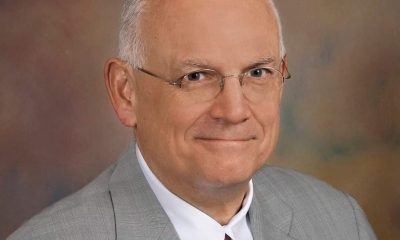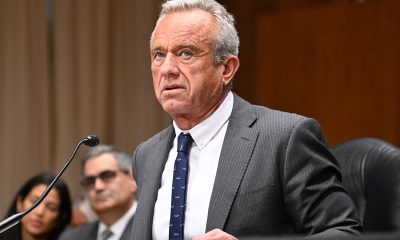Health
House members say AIDS drug program in crisis
Frank, Baldwin sign petition to Obama warning of AIDS deaths

U.S. Reps. Barney Frank (D-Mass.) and Tammy Baldwin (D-Wis.) have joined 76 of their House colleagues to sign a petition to President Obama calling for $126 million in emergency funds for the federal AIDS Drug Assistance Program.
The petition, dated May 19, says the emergency supplemental funds are needed to reverse a growing trend among states to put in place waiting lists for the mostly uninsured patients that rely on ADAP to provide their life-saving AIDS drugs.
“It’s abundantly clear that without emergency action, the ability for ADAP programs to provide a safety net for low income and underinsured Americans with HIV/AIDS will be seriously damaged,” says the petition.
Carl Schmid, deputy executive director of the AIDS Institute, a national AIDS advocacy group, said a coalition of AIDS groups has urged the White House and Congress to boost the federal funding allocation for ADAP for more than a year.
“The ADAP problem is getting worse and worse,” he said. “We’re very concerned that the administration and Democratic leaders in Congress are not responding.”
Schmid and officials with other AIDS groups have said the health care reform legislation that Congress approved earlier this year is expected to lessen the need for ADAP. The reform measure will provide health insurance coverage for millions of Americans, including people with HIV and AIDS, who currently can’t afford it.
The new insurance system will include prescription drug plans that cover the expensive anti-retroviral drugs that have been credited with preventing people with HIV from progressing to full blown AIDS.
But AIDS group officials note that the new program won’t go into full effect until 2014, and more than 1,000 people with HIV who can’t afford the drugs are on ADAP waiting lists in at least 11 states.
That number is expected to increase significantly if Congress doesn’t approve an emergency supplemental funding of $126 million for ADAP this year and another increase of $370 million for fiscal year 2011, according to officials with state AIDS offices.
Congress created ADAP in 1987 as part of the sweeping Ryan White AIDS Care Act. It was intended to provide free or low-cost drugs to people with HIV who have limited financial resources and lack health insurance.
The program is structured so that each state and U.S. territory operates an independent ADAP, with the option of supplementing the program with state funds. Most states have added differing amounts of their own funds to the program.
According to the National Alliance of State & Territorial AIDS Directors, Congress appropriated 72 percent of the total ADAP expenditures in 2000. But by 2009, the federal share of ADAP funding dropped to 51 percent, with state budgets and discounts offered by drug companies picking up the balance.
NASTAD said the decline in the federal share of the funding did not occur due to a reduction in federal funds; federal funds for the program continued to rise at a modest pace. The percentage of federal funds declined because the number of new people enrolling in state ADAP programs increased dramatically over the past decade, in part because the effectiveness of the drugs has kept more people with HIV alive.
Additionally, in recent years, the economic recession has resulted in the loss of jobs along with the loss of health insurance coverage for large numbers of Americans with HIV, AIDS group officials have said.
At the same time, the recession has resulted in a dramatic drop in tax revenue for states, forcing most states to put in place large budget cuts. The cuts have hit state health departments, including state funding for ADAP.
The federal government’s failure to increase its share of ADAP funding to cover the large increase in people with HIV enrolling in the program at the same time that states have slashed their ADAP budgets has been the catalyst for a spike in ADAP waiting lists in a growing number of states.
In one case, AIDS activists have said South Carolina sharply cut its ADAP budget, threatening to prevent hundreds of people with HIV in need of AIDS drugs from receiving them. The cuts could lead to the death of people with HIV who might otherwise remain healthy if they had access to the medication.
Earlier this year, a heated dispute surfaced between NASTAD and the AIDS Healthcare Foundation, a national AIDS advocacy group based in Los Angeles, over whether calls for Congress to appropriate more money for ADAP should be linked to demands that pharmaceutical companies provide greater discounts to ADAP for the purchase of expensive AIDS drugs.
Both groups favor an increase in federal funds for ADAP, and both have said they support efforts to negotiate greater price discounts from drug companies for state programs.
But unlike the AIDS Healthcare Foundation, NASTAD and its allies favor lobbying Congress for increased ADAP funds on a separate track from efforts to secure greater price reductions from the drug companies.
Julie Scofield, NASTAD’s executive director, has argued that a coalition of state programs and various AIDS advocacy groups have succeeded in securing significant drug discounts from major pharmaceutical companies.
In a statement sent by e-mail in March to more than 1,000 groups and activists, AIDS Healthcare Foundation officials said federal intervention alone is not sufficient to curtail the ever-accelerating cost of ADAP spending on drugs.
“The undeniable driver of costs in ADAPs is the costs of the medications that are purchased,” says the statement.
It noted California’s ADAP, in which spending for AIDS drugs increased by 165 percent since 2000, while the number of patients served increased by 49 percent.
“This is equivalent to a 77 percent increase in per patient cost of AIDS drugs,” says the statement. “Even with ‘price freezes’ and rebates, the costs of the pharmaceuticals will continue to rise to a level that will bankrupt states, and force major programmatic concessions in eligibility and formulary.”
Among other things, AIDS Healthcare Foundation proposed that for every dollar of federal funds allocated for ADAP, pharmaceutical firms should be required to “contribute two dollars in additional rebate or price cuts.”
As of earlier this week, neither Congress nor the White House had moved forward any of the proposals for supplementing the ADAP budget through a special, emergency funding allocation for fiscal year 2010.
Sens. Tom Coburn (R-Okla.) and Richard Burr (R-N.C.), however, introduced a bill last month calling for extracting the $126 million advocacy groups say is needed for ADAP this year from federal stimulus money approved under President Obama’s economic stimulus legislation.
The White House and Democratic leaders in Congress have yet to officially take a position on the Coburn-Burr bill, but Capitol Hill observers say they don’t expect the president or most Democrats in the House or Senate to support the measure.
The AIDS Healthcare Foundation has endorsed the bill.
Monkeypox
US contributes more than $90 million to fight mpox outbreak in Africa
WHO and Africa CDC has declared a public health emergency

The U.S. has contributed more than $90 million to the fight against the mpox outbreak in Africa.
The U.S. Agency for International Development on Tuesday in a press release announced “up to an additional” $35 million “in emergency health assistance to bolster response efforts for the clade I mpox outbreak in Central and Eastern Africa, pending congressional notification.” The press release notes the Biden-Harris administration previously pledged more than $55 million to fight the outbreak in Congo and other African countries.
“The additional assistance announced today will enable USAID to continue working closely with affected countries, as well as regional and global health partners, to expand support and reduce the impact of this outbreak as it continues to evolve,” it reads. “USAID support includes assistance with surveillance, diagnostics, risk communication and community engagement, infection prevention and control, case management, and vaccination planning and coordination.”
The World Health Organization and the Africa Centers for Disease Control and Prevention last week declared the outbreak a public health emergency.
The Washington Blade last week reported there are more than 17,000 suspected mpox cases across in Congo, Uganda, Kenya, Rwanda, and other African countries. The outbreak has claimed more than 500 lives, mostly in Congo.
Health
Mpox outbreak in Africa declared global health emergency
ONE: 10 million vaccine doses needed on the continent

Medical facilities that provide treatment to gay and bisexual men in some East African countries are already collaborating with them to prevent the spread of a new wave of mpox cases after the World Health Organization on Wednesday declared a global health emergency.
The collaboration, both in Uganda and Kenya, comes amid WHO’s latest report released on Aug. 12, which reveals that nine out of every 10 reported mpox cases are men with sex as the most common cause of infection.
The global mpox outbreak report — based on data that national authorities collected between January 2022 and June of this year — notes 87,189 of the 90,410 reported cases were men. Ninety-six percent of whom were infected through sex.
Sexual contact as the leading mode of transmission accounted for 19,102 of 22,802 cases, followed by non-sexual person-to-person contact. Genital rash was the most common symptom, followed by fever and systemic rash.
The WHO report states the pattern of mpox virus transmission has persisted over the last six months, with 97 percent of new cases reporting sexual contact through oral, vaginal, or anal sex with infected people.
“Sexual transmission has been recorded in the Democratic Republic of Congo among sex workers and men who have sex with men,” the report reads. “Among cases exposed through sexual contact in the Democratic Republic of the Congo, some individuals present only with genital lesions, rather than the more typical extensive rash associated with the virus.”
The growing mpox cases, which are now more than 2,800 reported cases in at least 13 African countries that include Kenya, Uganda, Rwanda, and prompted the Africa Centers for Disease Control and Prevention this week to declare the disease a public health emergency for resource mobilization on the continent to tackle it.
“Africa has long been on the frontlines in the fight against infectious diseases, often with limited resources,” said Africa CDC Director General Jean Kaseya. “The battle against Mpox demands a global response. We need your support, expertise, and solidarity. The world cannot afford to turn a blind eye to this crisis.”
The disease has so far claimed more than 500 lives, mostly in Congo, even as the Africa CDC notes suspected mpox cases across the continent have surged past 17,000, compared to 7,146 cases in 2022 and 14,957 cases last year.
“This is just the tip of the iceberg when we consider the many weaknesses in surveillance, laboratory testing, and contact tracing,” Kaseya said.
WHO, led by Director General Tedros Adhanom Ghebreyesus, also followed the Africa CDC’s move by declaring the mpox outbreak a public health emergency of international concern.
The latest WHO report reveals that men, including those who identify as gay and bisexual, constitute most mpox cases in Kenya and Uganda. The two countries have recorded their first cases, and has put queer rights organizations and health care centers that treat the LGBTQ community on high alert.
The Uganda Minority Shelters Consortium, for example, confirmed to the Washington Blade that the collaboration with health service providers to prevent the spread of mpox among gay and bisexual men is “nascent and uneven.”
“While some community-led health service providers such as Ark Wellness Clinic, Children of the Sun Clinic, Ice Breakers Uganda Clinic, and Happy Family Youth Clinic, have demonstrated commendable efforts, widespread collaboration on mpox prevention remains a significant gap,” UMSC Coordinator John Grace stated. “This is particularly evident when compared to the response to the previous Red Eyes outbreak within the LGBT community.”
Grace noted that as of Wednesday, there were no known queer-friendly health service providers to offer mpox vaccinations to men who have sex with men. He called for health care centers to provide inclusive services and a more coordinated approach.
Although Grace pointed out the fear of discrimination — and particularly Uganda’s Anti-Homosexuality Act — remains a big barrier to mpox prevention through testing, vaccination, and treatment among queer people, he confirmed no mpox cases have been reported among the LGBTQ community.
Uganda so far has reported two mpox cases — refugees who had travelled from Congo.
“We are for the most part encouraging safer sex practices even after potential future vaccinations are conducted as it can also be spread through bodily fluids like saliva and sweat,” Grace said.
Grace also noted that raising awareness about mpox among the queer community and seeking treatment when infected remains a challenge due to the historical and ongoing homophobic stigma and that more comprehensive and reliable advocacy is needed. He said Grindr and other digital platforms have been crucial in raising awareness.
The declarations of mpox as a global health emergency have already attracted demand for global leaders to support African countries to swiftly obtain the necessary vaccines and diagnostics.
“History shows we must act quickly and decisively when a public health emergency strikes. The current Mpox outbreak in Africa is one such emergency,” said ONE Global Health Senior Policy Director Jenny Ottenhoff.
ONE is a global, nonpartisan organization that advocates for the investments needed to create economic opportunities and healthier lives in Africa.
Ottenhoff warned failure to support the African countries with medical supplies needed to tackle mpox would leave the continent defenseless against the virus.
To ensure that African countries are adequately supported, ONE wants governments and pharmaceutical companies to urgently increase the provision of mpox vaccines so that the most affected African countries have affordable access to them. It also notes 10 million vaccine doses are currently needed to control the mpox outbreak in Africa, yet the continent has only 200,000 doses.
The Blade has reached out to Ishtar MSM, a community-based healthcare center in Nairobi, Kenya, that offers to service to gay and bisexual men, about their response to the mpox outbreak.
Health
White House urged to expand PrEP coverage for injectable form
HIV/AIDS service organizations made call on Wednesday
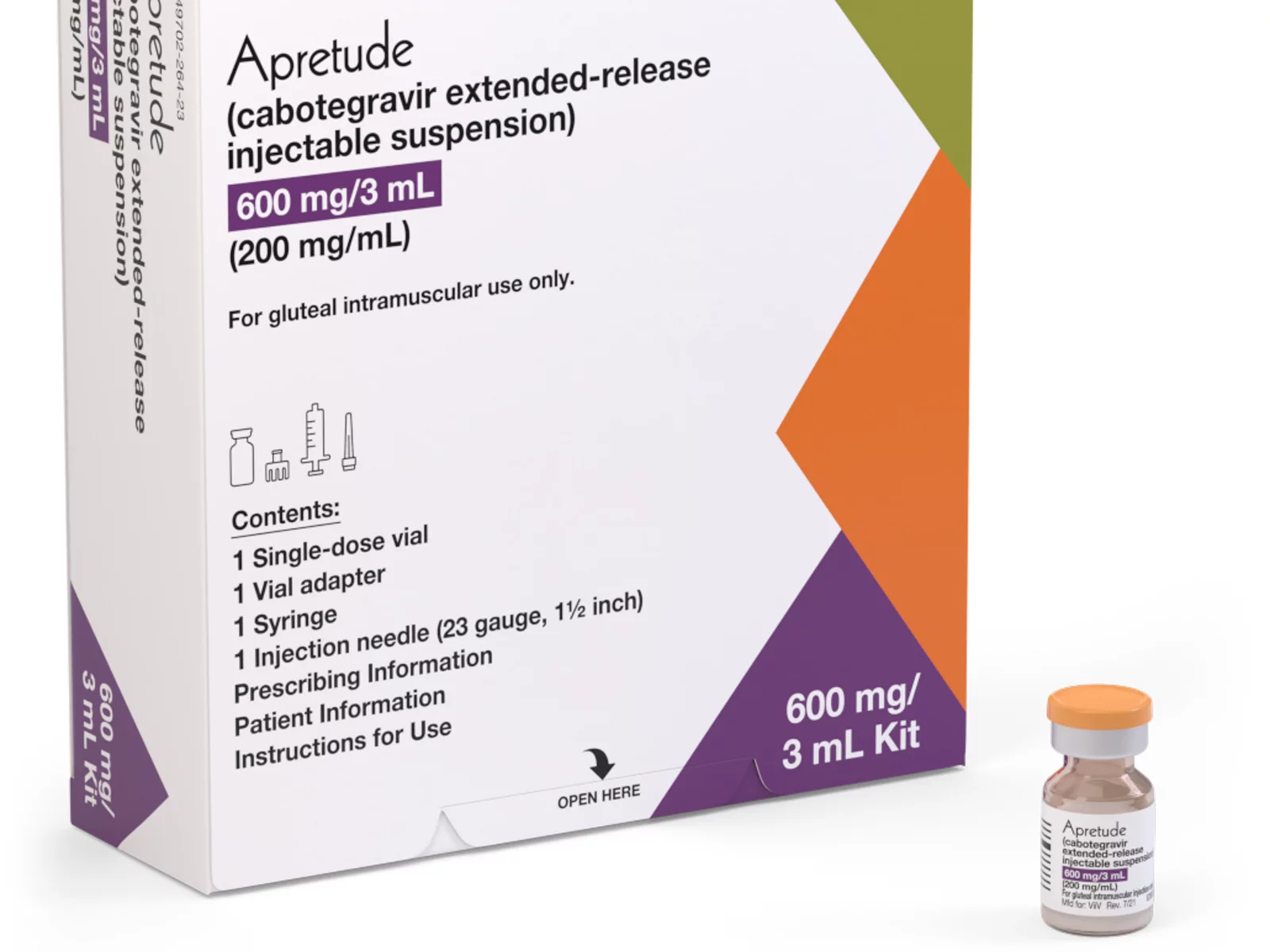
A coalition of 63 organizations dedicated to ending HIV called on the Biden-Harris administration on Wednesday to require insurers to cover long-acting pre-exposure prophylaxis (PrEP) without cost-sharing.
In a letter to Chiquita Brooks-LaSure, administrator of the Centers for Medicare and Medicaid Services, the groups emphasized the need for broad and equitable access to PrEP free of insurance barriers.
Long-acting PrEP is an injectable form of PrEP that’s effective over a long period of time. The FDA approved Apretude (cabotegravir extended-release injectable suspension) as the first and only long-acting injectable PrEP in late 2021. It’s intended for adults and adolescents weighing at least 77 lbs. who are at risk for HIV through sex.
The U.S. Preventive Services Task Force updated its recommendation for PrEP on Aug. 22, 2023, to include new medications such as the first long-acting PrEP drug. The coalition wants CMS to issue guidance requiring insurers to cover all forms of PrEP, including current and future FDA-approved drugs.
“Long-acting PrEP can be the answer to low PrEP uptake, particularly in communities not using PrEP today,” said Carl Schmid, executive director of the HIV+Hepatitis Policy Institute. “The Biden administration has an opportunity to ensure that people with private insurance can access PrEP now and into the future, free of any cost-sharing, with properly worded guidance to insurers.”
Currently, only 36 percent of those who could benefit from PrEP are using it. Significant disparities exist among racial and ethnic groups. Black people constitute 39 percent of new HIV diagnoses but only 14 percent of PrEP users, while Latinos represent 31 percent of new diagnoses but only 18 percent of PrEP users. In contrast, white people represent 24 percent of HIV diagnoses but 64 percent of PrEP users.
The groups also want CMS to prohibit insurers from employing prior authorization for PrEP, citing it as a significant barrier to access. Several states, including New York and California, already prohibit prior authorization for PrEP.
Modeling conducted for HIV+Hep, based on clinical trials of a once every 2-month injection, suggests that 87 percent more HIV cases would be averted compared to daily oral PrEP, with $4.25 billion in averted healthcare costs over 10 years.
Despite guidance issued to insurers in July 2021, PrEP users continue to report being charged cost-sharing for both the drug and ancillary services. A recent review of claims data found that 36 percent of PrEP users were charged for their drugs, and even 31 percent of those using generic PrEP faced cost-sharing.
The coalition’s letter follows a more detailed communication sent by HIV+Hepatitis Policy Institute to the Biden administration on July 2.
Signatories to the community letter include Advocates for Youth, AIDS United, Equality California, Fenway Health, Human Rights Campaign, and the National Coalition of STD Directors, among others.
-

 Federal Government4 days ago
Federal Government4 days agoHHS to retire 988 crisis lifeline for LGBTQ youth
-
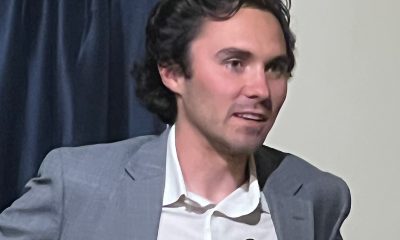
 Opinions4 days ago
Opinions4 days agoDavid Hogg’s arrogant, self-indulgent stunt
-

 District of Columbia4 days ago
District of Columbia4 days agoD.C. police seek help in identifying suspect in anti-gay threats case
-
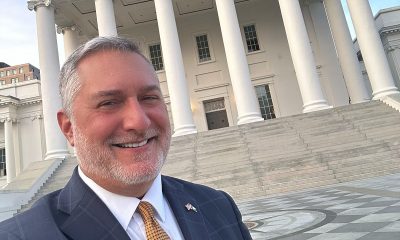
 Virginia4 days ago
Virginia4 days agoGay talk show host wins GOP nom for Va. lieutenant guv

